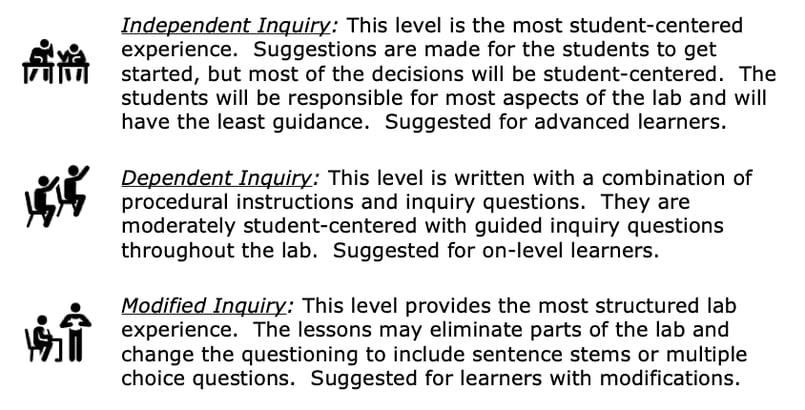Orbits and the Movement of Planets Inquiry Lab
Middle School Inquiry Lab on Orbits and the Movement of Planets
In this lab students will analyze the orbital distance and revolutionary period of planets in our solar system.
Each inquiry lab will contain an essential question that will drive the lesson and make students think. For this lesson, the essential question is:
- How does the distance from the Sun affect the revolution period of planets in our solar system?
BACKGROUND INFORMATION AND MATERIALS LIST:
Students will begin the lab by reading the essential question and background information. This can be done individually, as lab groups, or as a whole class. If you consider lab groups, you also might include some type of whole class formative checks before digging into the lab.

Materials List:
- colored pencils
- lengths of yarn wrapped around Popsicle sticks: 1 m, 1.5 m, 5 m, 10 m
PROCEDURE:
For this lab, you might want to take the class outside. Using the 1 m string, one student holds an end that represents the Sun while another student holds the end that represents the Earth. The Earth students will begin to walk in an “orbit” slowly around the Sun in an elliptical pattern and will speed up when they are closest to the Sun.
Students will record the time it took to complete one revolution around the Sun. Students will repeat this process three more times, each time with the longer length of string representing the revolutions of Mars, Jupiter, and Saturn. Students will then create a graph representing the revolution periods on their lab sheet.
Understanding what they just completed, students will then have to answer questions as to the period of revolutions of Mercury/Venus and Uranus/Neptune.
CONCLUSION
Students will go back to the essential question and write a CER (Claim, Evidence, Reasoning) to conclude the lab. Once completed, students will reflect back on their learning by answering the following questions:
- How did you prove Kepler’s third law of planetary motion?
- Is there a relationship between distance from the Sun and length of day? Explain.
MODIFIED AND INDEPENDENT INQUIRY VERSIONS
All of the Kesler Science inquiry labs come with three different modification levels. Each lab is differentiated using the icons below.
STANDARDS ALIGNMENT
TEKS: 6.11A – Describe the physical properties, locations, and movements of the Sun, planets, moons, meteors, asteroids, and comets.

Download Over $100 in FREE Resources
For Middle School Science
Simply create a login below and gain immediate access to a selection of our Kesler Science product line worth $100 - for FREE. There's a full version of every product type! You'll also join tens of thousands of middle school science teachers who receive timely tips and strategies straight to their inbox.





